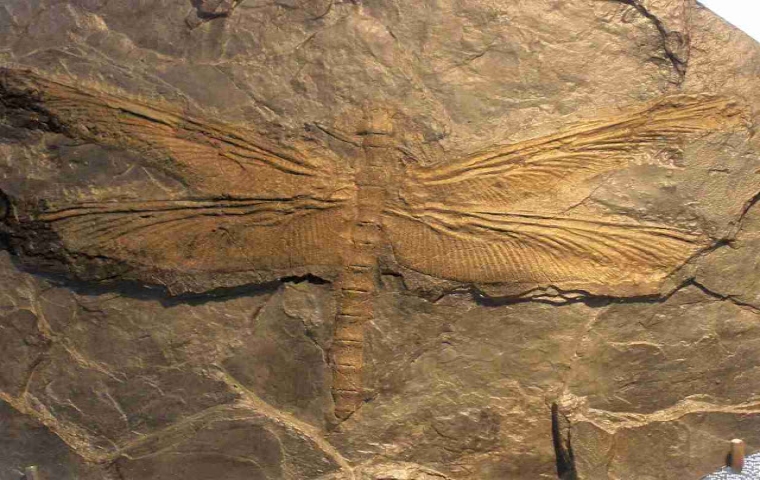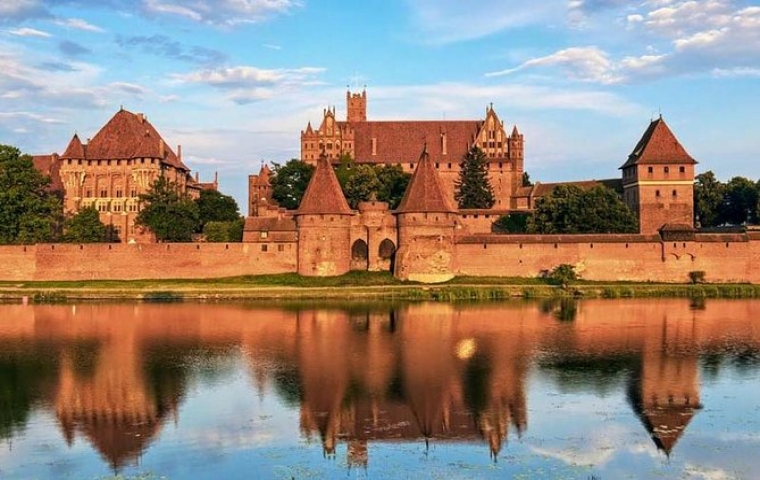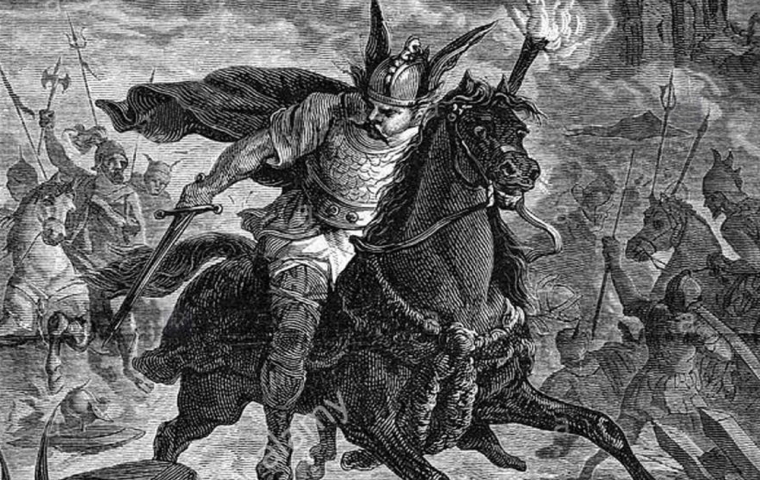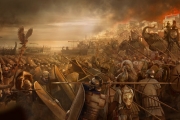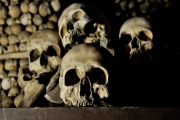Without the Lebanese, Israel Would Have Never Dreamt of Having Solomon's Temple
Wishing to offer a temple to his God, King David had contacted King Hiram of Tyre for the preparations of this construction.

The Holy of Holies dwelling and most sacred site for the Hebrews... the first Jewish temple in Jerusalem... the religious focal point for worship and sacrifices... the pride of the nation of Israel... the house of God and the marvel of Solomon!!! Yet the truth is: It is no Solomon's nor any Hebrew's artwork. Believe it or not, the temple would have never existed - actually would have never even been imagined or conceptualized - without the people of Lebanon.
At the time of its construction, the Hebrews were nothing more than uncivilized nomads with very little skills or knowledge, who - according to the Bible - has just arrived to the land of Canaan after spending 40 years wandering in the desert of Sinai.
"Therefore, command that cedars from Lebanon be cut down for me. My servants will be with your servants, and I will pay your servants' wages according to whatever you say, for you know that not a man among us knows how to cut timber like the Sidonians." (1 Kings 5:6)
As per the Hebrews self-admission in the Old Testament, without the Lebanese artisans, architects, craftsmen and builders, and without the building material from Lebanon especially wood and precious metals, the Holy Temple would have never seen the light of day. In short, the Lebanese did it all... And the Hebrews just stood there open-mouthed, watching enthusiastically their wonder being chiseled by the hands of the civilized ones.
Preface
Bible Controversy
At the beginning of the tenth century BC, Hebrew nomads were already settled in Canaan. The certainty that they actually lived in Egypt and then returned to the land of Canaan has no historical proof or records outside the Old Testament.
The story in the Bible of the Hebrews defeating the local Canaanites and settling in the area is clearly untrue. There are evidence that the Hebrews indeed lived in the central hill country and a few places near the Jordan River valley, trying to hold their own against other Canaanites and the powerful Philistines, some of which had chariots and warriors armed with iron weapons against which few could stand.
King David and King Solomon probably did exist. However, the latter could not be the builder of a great temple for the Jewish god. Even the Bible tells us something very different. The Bible tells us that King Solomon did not worship only Yahweh but many other gods. Thus monotheism was not the common ideology even in the time of King Solomon. In his time Yahweh, so it seems, was one god among many.
Available References
Unfortunately, the study of this episode of ancient history is only made possible through two principal sources: the Old Testament, and the writings of the historian Josephus who lived in Israel during the first century of our era. Josephus, who was jewish, built his reference on the lost work of Menander of Ephesus on the history of Tyre.
Whether King Solomon did actually exist at the time of the building of the temple or not, and whether he did actually have the wealth described in Old Testament, I will still mention him in my article as a representation of the Israelites people at the time. The only thing that I am certain of is that the raw material of wood and gold, with other metals, and the skilled architects and craftsmen are all from Lebanon; nobody closer to the Israelites had such raw materials and skills so close by. After all, there is still some truth behind the myths.
Alliance Between the Phoenicians and the Israelites
The king Hiram of Tyre ruled from 970-936 BC. He had made an alliance with King David, as I Kings 5:1 states "Hiram had always been a friend of David", during of which he built him a palace.
After king David’s death, Hiram continued to maintain friendly relations with king Solomon, David’s son, who explained in a letter to Hiram:
"You know that because of the constant wars my father David had to fight against the enemy countries all round him, he could not build a temple for the worship of the Lord his God until the Lord had given him victory over all his enemies. But now the Lord my God has given me peace on all my borders. I have no enemies, and there is no danger of attack. The Lord promised my father David, ‘Your son, whom I will make king after you, will build a temple for me’ and I have now decided to build that temple for the worship of the Lord my God." (1 Kings 5:3)
When he was ready to build the temple, Solomon wrote to Hiram:
"So send your men to Lebanon to cut down cedars for me. My men will work with them, and I will pay your men whatever you decided. As you well know, my men don’t know how to cut down trees as well as yours do. (1 Kings 5:6)
Then Hiram sent Solomon the following message:
"I have received your message and I am ready to do what you ask. I will provide the cedars and the pine trees. My men will bring the logs down from Lebanon to the sea, and will tie them together in rafts to float them down the coast to the place you choose. There my men will untie them and your men will take charge of them. On your part, I would like you to supply the food for my men." (1 Kings 5:8-10).
Solomon wrote:
I know how skillful your woodmen are, so send me cedar, cypress, and juniper logs from Lebanon. I am ready to send my men to assist yours in preparing large quantities of timber, because this temple I intend to build will be large and magnificent. As provisions for your workmen, I will send you two thousand tones of wheat, two thousand tones of barley, four hundred thousand liters of wine, and four hundred thousand liters of olive oil. (2 Chronicles 2:8-10)
And Hiram replied:
In the mountains of Lebanon we will cut down all the cedars you need, bind them together in rafts, and float them by sea as far as Joppa. From there you can take them to Jerusalem. (2 Chronicles 2:16)
What's in it for Hiram to do someone else's work?
The Old Testament enjoys exposing the King of Tyre Hiram as the servant of both David and Solomon - as if they were giving him orders with a divine will to build them the temple and palaces - when actually it wasn't the case. Hiram was actually helping them for strategical and interest returns. Anyone who knows the mindset of the Phoenicians understands that all they care about from their relations with other people, is keeping their business running and their wealth growing.
During Hiram's reign, Tyre grew from a satellite of Sidon into the most important of Phoenician cities, and the holder of a large trading empire.
Through the alliance with Solomon, Hiram ensured himself access to the major trade routes to Egypt, Arabia and Mesopotamia. The pact between Hiram and Solomon was honored and continued for twenty years. Hiram supplied the builders and the cedar and juniper wood, and Solomon, in exchange sent to his friend 20,000 Muids of wheat and 20,000 virgin oil measures annually. Solomon also ceded twenty cities of Galilee to Tyre.
Historians report that Hiram was not entirely satisfied, and then Solomon promised him a common expedition to Ophir, the mysterious country, in the quest of treasures in gold and precious stones.
The Temple of Melcart of Tyre as a prototype

The temple of Melcart of Tyre aroused the admiration of its neighbors and contemporaries. Historians refer to it as one of unmatched magnificence in the Eastern Mediterranean. It was said to have two great columns one of gold and the other covered with precious stones. Herodotus sang its praises when he visited Tyre.
Solomon's Temple Copy of Melqart's Temple
In phoenicia.org, Salim Khalaf describes it the best:
After studying records about Solomon's Temple and Melqart's Temple, one finds a lot in common between the two. It would not be a far-fetched suggestion to say that Solomon's Temple of Jerusalem was a copy of Melqart's Temple of Tyre. Because of the splendor it occupied in their mind, it is understandable that the Phoenician builders must have used Melqart's Temple as a prototype for designing and building Solomon's Temple.
The Old Testament description of Solomon's temple gives an idea of what the Tyrian temples must have been like. Probably they were even more magnificent - Hiram would hardly have built something better for Solomon than he had built for himself.
The Cedars of Lebanon & wood for the temple
The cedar of Lebanon was well-regarded and certainly well-respected in ancient times, and was therefore used for the most prestigious of developments that would have been fit for royalty.
Hiram tied the timber together and floated these rafts to Solomon's port, where Israelites and other laborers carried them to Jerusalem and constructed the Temple. Great strength was associated with the cedars of Lebanon, as illustrated by a passage from Psalms 29:5.
"The voice of the Lord breaks the cedars; yes, the Lord breaks in pieces the cedars of Lebanon."
Even the prophets Isaiah (Is. 2:13; 14:8), Ezekiel (Ez. 27:5; 31:3) and Hosea (Hos. 14:5-6) spoke of the cedars of Lebanon in their prophecies. Perhaps the most fascinating verse concerning the cedars of Lebanon is found in Psalms 104:16.
"The trees of the Lord drink their fill, the cedars of Lebanon which He planted,"

The cedars used for the temple were taken from Barouk in the Chouf Mountain area, as oral tradition in Lebanon still maintains. Apart from cutting down the trees and trimming them, it must have been an enormous task transporting them from Barouk down the mountains to the coast.
The carpenters and woodcarvers worked hard too. The whole interior of the temple was panelled in cedar, the roofs were cedar, the floors were pine. Everything was carved with gourds, flowers, fruit, palm trees and cherubim.
He put in a ceiling made of beams and boards of cedar. The three-storied annexe, each storey 2.2 metres high, was built against the outside walls of the temple, and was joined to them by cedar beams. (1 Kings 6:9)
The inside walls were covered with cedar panels from the floor to the ceiling, and the floor was made of pine. An inner room, called the Holy of Holies, was built in the rear of the temple. It was 9 metres long and was partitioned off by cedar boards reaching from the floor to the ceiling. (1 Kings 6:15-16)
The cedar panels were decorated with carvings of gourds and flowers; the whole interior was covered with cedar, so that the stones of the walls could not be seen. (1 Kings 6:18)
The altar was covered with cedar panels. (1 Kings 6:20)
Tyre was famous for its purple dye and Sidon for its embroidered cloth. Embroidered linen dyed with Phoenician purple was used in the Holy of Holies:
A curtain for the Holy of Holies was made of linen and of other material, which was dyed blue, purple, and red, with designs of the winged creatures worked into it. (2 Chronicles 3:14)
The stone from Byblos
At King Solomon’s command they quarried fine large stones for the foundation of the temple. Solomon’s and Hiram’s workmen and men from the city of Byblos prepared the stones and the timber to build the temple. (1 Kings 5:17-18)
The temple was built of stone quarried and prepared by masons from the Phoenician cities of Tyre and Jbail (Byblos). The stones were cut in the quarry: the Bible tells us not a hammer was heard on the building site as the stones had been shaped so perfectly that they slotted together without being banged into place. The Phoenicians always used huge stones for foundations because the Levant is located on the Great Rift Valley - the big stones helped make buildings earthquake-proof.
An inner court was built in front of the temple, enclosed with walls which had one layer of cedar beams for every three layers of stone. (1 Kings 6:36)

The metal and Hiram : the Phoenician bronze sculptor
We cannot talk of Solomon's temple without evoking another Huram (or Hiram), the Phoenician bronze sculptor or master mason. Between legend and historical truth, the story of the master Hiram remains rather enigmatic. The Book of Kings (I Kings, Chapter VII, 13-45) presents it in these terms:
"King Solomon sent to Tyre and brought Huram, whose mother was a widow from the tribe of Naphtali and whose father was from Tyre and a skilled craftsman in bronze. (...) Huram finished all the work he had undertaken for King Solomon in the temple of the Lord. the two pillars(4), the two bowl-shaped capitals on top of the pillars, the two sets of network decorating the two bowl-shaped capitals on top of the pillars, the four hundred pomegranates for the two sets of network - two rows of pomegranates for each network - decorating the bowl-shaped capitals on top of the pillars, the ten stands with their ten basins, the Sea and the twelve bulls under it, the pots, shovels and sprinkling bowls and all other accessories.
That Hiram made for King Solomon for the temple of the Lord were of burnished bronze."
Another passage from the Bible (II Chronicles - Chapter 2: 3-14) also evokes the history of the master Hiram:
"Solomon sent word to Hiram the king of Tyre (...) Send me, therefore, a man skilled to work in gold and silver, bronze and iron, and in purple, crimson and blue yarn, and experienced in the art of engraving, to work in Judah and Jerusalem with my skilled workers, whom my father David provided. (...) Then Hiram the king of Tyre answered (...) Now I have sent a skilled man, who has understanding, Huram-abi, the son of a woman of the daughters of Dan, and his father was a man of Tyre. He is trained to work in gold, silver, bronze, iron, stone, and wood, and in purple, blue, and crimson fabrics and fine linen, and to do all sorts of engraving and execute any design that may be assigned him."
As for legend, it is said that Hiram worked for seven years in building the temple. His workers were divided into three classes: apprentices, journeymen and masters. Each class had a password allowing its members to receive a gradual salary.
Huram cast two bronze columns, each one 8 metres tall and 5.3 metres in circumference, and placed them at the entrance of the temple. He also made two bronze capitals, each one 2.2. metres tall, to be placed on top of the columns. The top of each column was decorated with a design of interwoven chains, and two rows of bronze pomegranates. The capitals were shaped like lilies, 1.8 metres tall, and were placed on a rounded section which was above the chain design. There were 200 bronze pomegranates in two rows round each capital. Huram placed these two bronze columns in front of the entrance of the Temple: the one on the south side was named Jachin (he establishes), and the one on the north was named Boaz (by his strength). The lily-shaped bronze capitals were on top of the columns. And so the work on the columns was completed. (1 Kings 7:15-22)
Huram made a round tank of bronze, 2.2. metres deep, 4.4. metres in diameter, and 13.2 metres in circumference. All round the outer edge of the rim of the tank were two rows of bronze gourds, which had been cast all in one piece with the rest of the tank. The tank rested on the backs of twelve bronze bulls that faced outwards, three facing in each direction. The sides of the tank were 75 millimetres thick. Its rim was like the rim of a cup, curving outwards like the petals of a lily. The tank held about 40,000 litres. (1 Kings 7:23-26)
Conclusion
"Archaeologists and historians are generally more interested in Greek, Roman and Hebrew history than in Phoenician. Why? All European civilisation is believed to have stemmed from ancient Greece and Rome." - Salim Khalaf, phoenicia.org.
The Phoenicians are best know for developing the alphabet, and little are they credited for all the other splendors they have given to humanity.
They were at some point the real cradle of civilization, and many things they have developed were credited to other people. Of course they got influenced by others as well, but no one transferred innovations as wide as them. All the world has learned from the Phoenicians: Hebrews, Persians, Romans, Egyptians... and mostly the Greeks.
I would like to conclude with the quote below from the 18th century:
"The Phoenicians, a people to whom all the nations of the West owe the arts, the sciences, and almost sociability." - Abbot Foucher, 18th century
The Largest Insect Ever Existed Was a Giant 'Dragonfly'
Weird History 'Meganeura' Was A Prehistoric Dragonfly With A Two-Foot Wingspan.
10 Largest Castles in the World
The largest castles in the world in terms of area.
What if Attila Survived his Wedding Night?
What if Attila hadn't died in 453 AD? How his survival would have transformed the fate of the Roman Empire and all of Europe?




